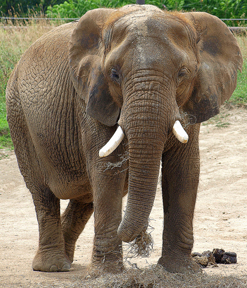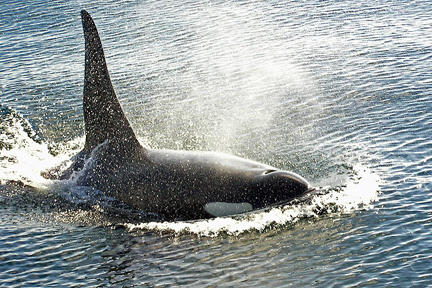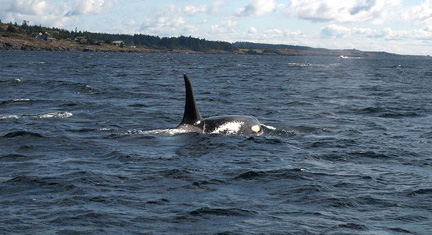
Canadian Geographic, July 2009
A black Labrador retriever named Tucker is helping researchers determine why orcas summering off southern Vancouver Island are dying.
Tucker lends his nose to science by standing in a moving open-decked motorboat and sniffing the wind to detect orca scat floating on the surface of the Strait of Georgia and Haro Strait. His human colleagues, including Sam Wasser, director of the University of Washington’s Centre for Conservation Biology, scoop of the greenish brown goo and later analyze its hormone levels.
“Killer whale scat doesn’t stay afloat long, and it’s about the same colour as the water,” says Wasser, who uses dogs to study elephants, caribou, spotted owls and other at-risk species. “Without a dog, we’d have a hard time getting enough samples.”
Because Tucker can smell the poop from a long way off, the researchers needn’t crowd the whales. Preliminary analysis of hormones in the scat suggests that boat traffic stresses orcas.
The results from samples collected since 2006 also indicate the whales’ preference for Chinook salmon may be causing them to starve. Stress hormones in the scat peak and thyroid hormones plummet from September through December, when the salmon are at their scarcest. Thyroid hormones help regulate metabolism. When an animal starves, levels drop and metabolism slows. Wasser says the hormone levels mirror observed orca death rates.
“In 2007, thyroid levels in the samples were highest, and no whales died. They were intermediate in 2006, when there was five percent mortality, and lowest in 2008, when mortality decreased to eight percent.”
More samples are needed to confirm the results. Wasser and Tucker will return to the straits to patrol for poop this summer.




